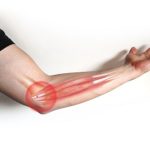Sport offers a valuable way to stay fit, improve coordination, and enjoy competition. Yet, with physical effort comes the risk of injury. Whether playing recreationally or at elite level, athletes are prone to certain predictable injuries. Understanding these helps prevent problems, support recovery, and keep players active and safe.

Types of Sports Injuries
The most frequent injuries that occur during athletic activity are:
Sprains and Strains
Sprains involve damage to ligaments, while strains affect muscles or tendons. Sudden movements, awkward landings, or overuse often cause these injuries. Ankles, knees, and hamstrings are particularly vulnerable during activities that involve jumping, sprinting, or rapid changes in direction.
Fractures
Bone fractures may occur after falls, direct contact, or heavy impact. Common sites include the wrist, hand, collarbone, and lower leg. Prompt medical attention is crucial, but with appropriate care and rehabilitation, most athletes make a full recovery.
Soft Tissue Injuries
These include ligament tears such as anterior cruciate ligament (ACL) injuries, meniscus tears in the knee, and groin strains. Sports like football, basketball, and rugby place significant rotational and impact forces on joints, increasing the risk of such injuries.
Concussions
Head injuries remain a serious concern, particularly in contact sports. Concussions can result in headaches, dizziness, memory disturbances, and visual symptoms. Appropriate medical assessment and adherence to return-to-play protocols are vital to prevent long-term complications.
Injury Patterns in Different Sports
- Football: ankle sprains; ACL injuries; concussions; hamstring strains
- Basketball: ankle sprains; meniscus tears
- Rugby: shoulder dislocations; groin strains
- Tennis: lateral epicondylitis (tennis elbow)
- Volleyball: ankle sprains; knee injuries
- Running: stress fractures; Achilles tendinopathy
Risk Factors
Both internal and external factors contribute to sports injuries:
- Intrinsic factors: previous injury, muscle imbalance, limited flexibility, anatomical differences, or hormonal influences in females increasing ACL injury risk.
- Extrinsic factors: poor warm-up routines, rapid increases in training intensity, unsuitable equipment, or inadequate recovery between sessions.
Preventive Strategies
Effective injury prevention includes:
- Structured warm-ups incorporating dynamic stretching and sport-specific drills;
- Strengthening programmes focusing on core stability, balance, and neuromuscular control;
- Gradual progression in training volume and intensity;
- Proper footwear, protective gear, and safe playing surfaces;
- Prompt medical assessment for any early symptoms to avoid the progression of minor issues.
Considerations by Age and Sex
Children and adolescents are more prone to fractures due to developing bones, while growth spurts can lead to muscle-tendon strain. Adults often experience overuse injuries, including tendinopathies and degenerative meniscus damage. Female athletes face a higher risk of certain injuries, such as ACL tears and bone stress injuries, while men generally have higher return-to-sport rates after certain surgeries.
Diagnosis and Management
Early assessment includes a thorough history, clinical examination, and, when necessary, imaging such as X-rays or MRI. Initial care typically follows the POLICE principle: Protect, Optimise Loading, Ice, Compression, Elevation. Treatment may involve physiotherapy, a gradual return to activity, bracing, or surgery for more severe cases. Rehabilitation progresses in stages, restoring motion, strength, and function before resuming full sports participation.
Conclusion
Sports injuries are common across all age groups and levels of competition. Sprains, strains, fractures, ligament tears, and concussions make up the majority of cases. Recognising injury patterns, addressing risk factors, and applying preventive strategies allow athletes to stay active while reducing injury risks. Early diagnosis and structured rehabilitation remain essential for a safe and effective return to sport.
For enquiries and online appointments, send a message to www.DrAyyappanVNair.com/contact
For informative videos related to Shoulder problems and their treatment options, Sports Injuries and other orthopedic conditions, visit our YouTube channel Bangalore Shoulder Institute – https://www.youtube.com/@BangaloreShoulderInstitute


